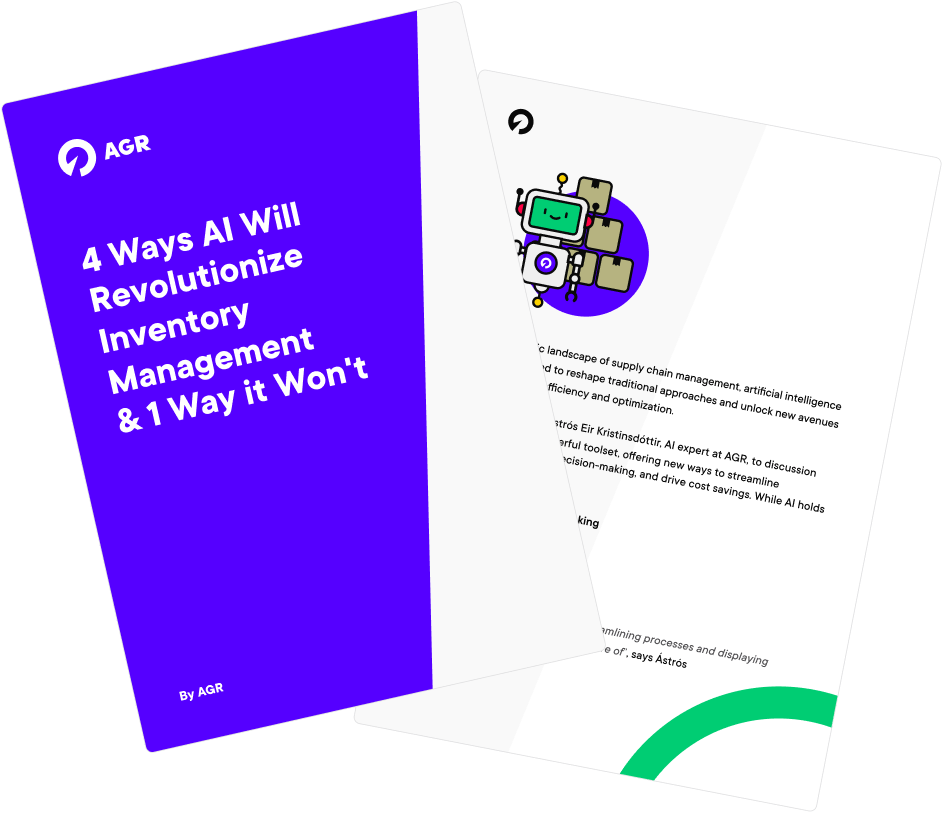AI represents a shift in the field of supply chain management, offering capabilities beyond traditional statistical forecasting methods. By harnessing the power of machine learning and advanced analytics, organizations can unlock insights into consumer behaviour, market dynamics, and inventory management strategies. However, realizing the full potential of AI-driven forecasting requires a holistic approach that encompasses robust data readiness, organizational empowerment, and a strategic mindset shift.
Read on to learn more about the potential of AI in demand forecasting and how to make sure your data is ready to take advantage of AI forecasting tools.
What Really is AI-Driven Forecasting?
The conversation surrounding AI in supply chain management often centres on its role in forecasting. Forecasting expert Fanndís explains that AI tends to be brought up with demand forecasting due to its association with estimation, even though are other uses, such as generative AI. Nonetheless, AI could be ideal for combining historical sales data with market trends and other external factors to generate highly accurate demand forecasts beyond traditional statistical models. Enriching the forecast with outside data can enable you to anticipate fluctuations in consumer behaviour and optimize inventory levels accordingly.
According to Ástrós Eir, AI expert at AGR, AI also has the ability to adapt and evolve over time by continuously learning from new data input and adjusting forecasts accordingly. Its dynamic nature enables AI to capture subtle nuances and changing market dynamics, allowing businesses to make more agile and informed decisions in response to evolving conditions.
For example, extreme Gradient Boosting, or XGBoost, is a state-of-the-art machine learning technique that has gained widespread recognition for its ability to improve forecasting accuracy. The "extreme" in XGBoost comes from its efficiency in handling sparse data and unexpected sales spikes, making it particularly beneficial for products with an erratic sales history. The magic of XGBoost lies in its adaptability. It can automatically build forecast models that consider a range of factors, including historical sales data, seasonality, market trends, and even external variables that might affect demand.
Blending AI and Statistical Forecasts for the Best Outcomes
Combining traditional statistical methods with AI techniques offers supply chain managers a balanced approach to forecasting that harnesses the strengths of both methodologies. While statistical forecasting is effective in scenarios with small datasets, simple trends, and stable data patterns, AI forecasting, particularly machine learning (ML), demonstrates superiority in handling large datasets and rapidly changing patterns. The key lies in understanding the data complexity and interpretability needs. For instance, when demand forecasting relies on numerous factors or when patterns evolve swiftly, ML often outperforms traditional statistical methods.
Exploring examples further elucidates this synergy. ML algorithms can discern intricate relationships between external variables like weather forecasts and demand patterns, leading to more precise predictions. For instance, ML can identify the correlation between high temperatures in weather forecasts and increased ice cream sales, enabling supply chain managers to adjust their inventory levels accordingly. This ability to capture nuanced relationships empowers supply chain managers to anticipate demand fluctuations more accurately, ultimately optimizing inventory management and customer satisfaction.
Data Readiness and Empowerment
Any AI tool is only as good as the data that it learns from. This means that realizing the full potential of AI-driven forecasting requires robust data readiness and strategies. You can prepare of AI forecasting by assuring that clean, high-quality data are readily accessible for analysis. Answer these simple questions to start.
- Do you have the data that is most useful for your business in one place?
- Is your inventory data standardized?
- Is your data available to AI tools?
Having said that, if you have your data integrated to an inventory management solution it is up to your software provider to prepare your data to the next level by integrating AI forecasting into your daily operations.
AI-driven forecasting necessitates a shift in organizational mindset, moving away from static, deterministic approaches towards embracing uncertainty and complexity. Making the move is worth it, though, as AI-driven forecasting brings with benefits like better understanding of seasonal trends, smoother handling of new items, and quicker detection of patterns that could impact your forecasts. As businesses of all sizes embrace AI as a strategic ally, they can unlock new opportunities for growth, resilience, and competitive advantage in an increasingly complex and dynamic marketplace.




